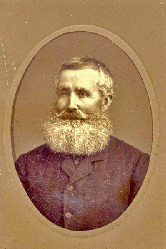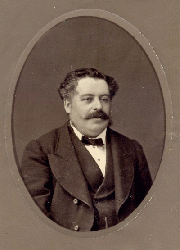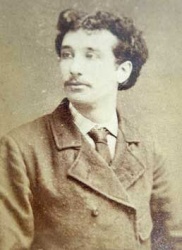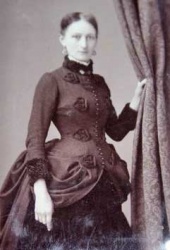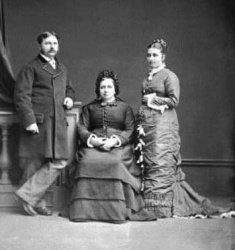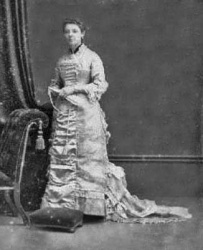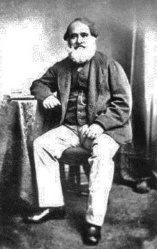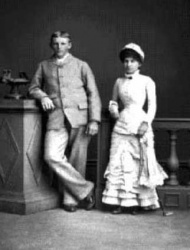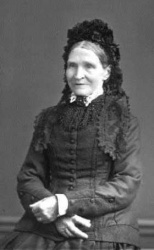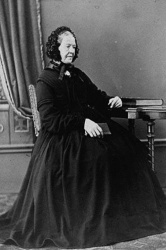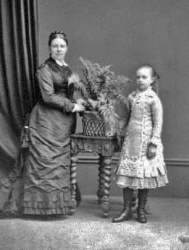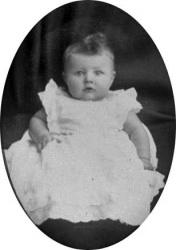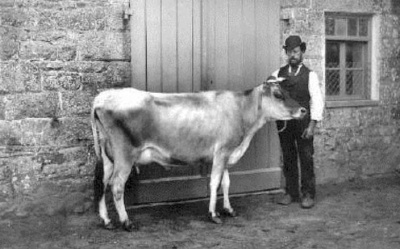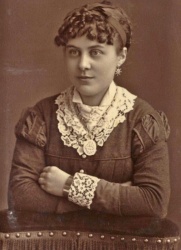Ernest Baudoux
Originally from France, Ernest Baudoux (1828-1897) worked in Jersey from 1869 at 11 Craig Street and 51½, 56 and 59 New Street. In 1885 he was joined in business by his son, but two years later they sold out to John Stroud, a young photographer from London, who in turn sold his business, including many of Baudoux's glass-plate negatives, to Albert Smith. Some of these photographs have been attributed incorrectly to Smith and the Photographic Archive of La Société Jersiaise have a project under way to attempt to correctly identify who took each of the 3000-plus images in their collection attributed to Smith.
There are 1342 photographs by Baudoux available on line from the Société's archive. They are mainly portraits, which was the photographer's speciality. Many of his portraits exist in two versions, one of them retouched to hide facial blemishes and wrinkles. Baudoux also undertook photographic commissions of clients' houses and, working with his sons, he photographed views of the island.
He was the first significant chronicler of island life in images, a role which was later to be taken up by Albert Smith, which explains why there is doubt over who actually took some of the images attributed to Smith. The gallery below shows the diversity of subjects captured by his lens; from the portraits which were the bread-and-butter of an early professional photographer, to scenes of the island and pictures of major events in the mid-Victorian era.
Wrong attribution
La Société say that of a total of 3298 images attributed to the Albert Smith studio in their archive, they estimate that as many as 500 are in fact by Ernest Baudoux. "In some cases image content instantly corrects an attribution; others can be more challenging. Useful information exists in multiple forms including: original negative references and inscriptions; process; format; costume; uniforms; architecture. The process is ongoing. What is clear is that Baudoux was highly skilled with the wet collodion negative and carbon print processes, both of which were difficult to master but offered rewards of great quality."
Many of the surviving Baudoux carte de visite photographs used the Chromotype process, also known as "carbon printing". These produced a sepia tone print with a metallic-like finish. The sepia toning survives as a much stronger colour than paper sepiatone prints of the same age, which fade badly, but the Chromotype prints are easily scratched. The process was patented in 1864 by an Englishman, Joseph Swan, but used mostly by the French. It required a licence, so the photographs were more expensive than ordinary paper cartes de visite mounted on card and did not become particularly popular.
In carbon printing a sheet of paper is coated with light-sensitive gelatin containing a pigment, usually carbon. The sheet is then exposed to daylight under a negative. The process is difficult and laborious, making carbon prints about twice as expensive as platinum and up to five times more costly than silver. Because pigments are used instead of dyes, the prints last longer than those made by any other process.
Dating pictures
Baudoux gallery
A gallery of photographs by Ernest Baudoux from the 1870s and '80s




